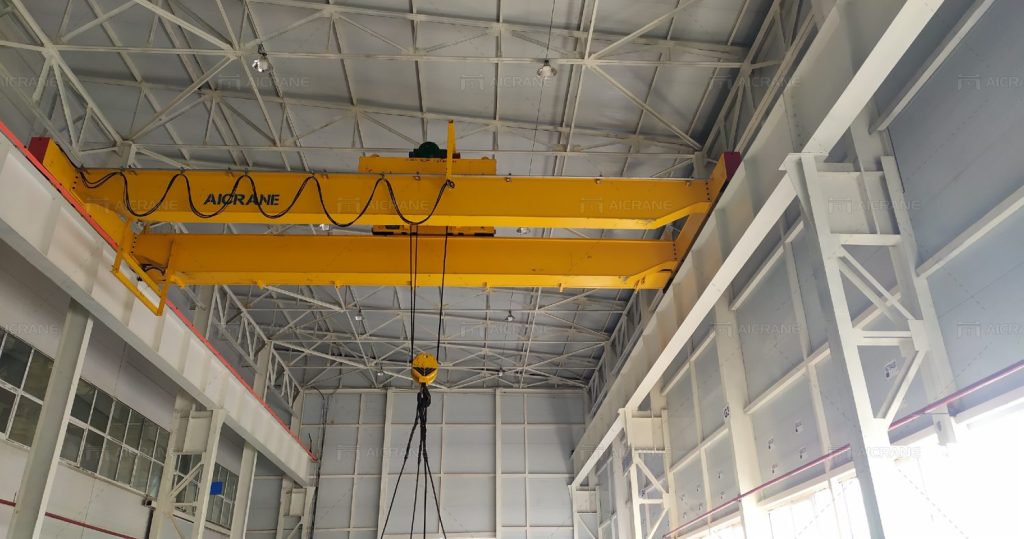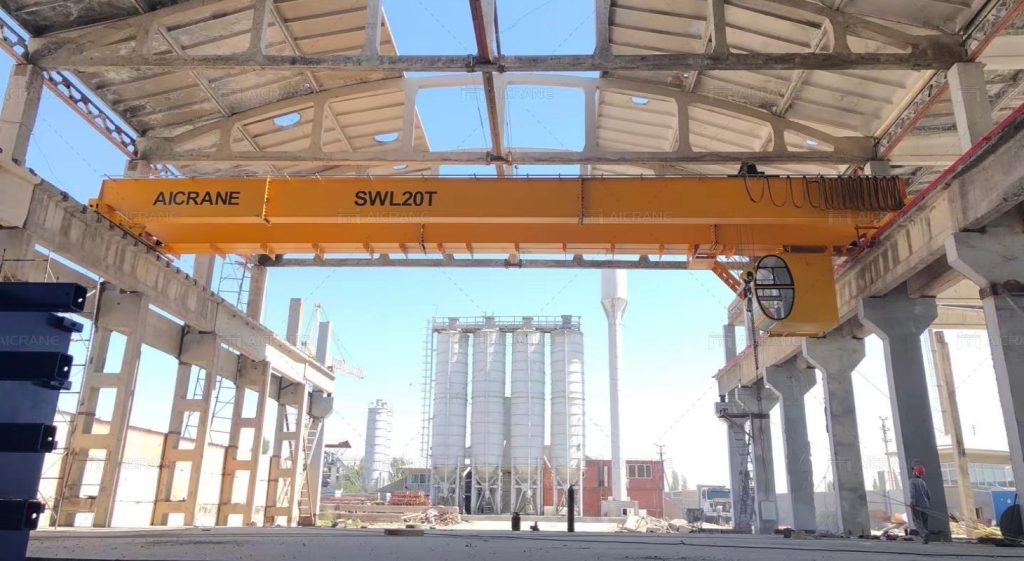In the realm of industrial operations, efficient and safe material handling is paramount. When it comes to lifting heavy loads, a reliable and robust solution is required. The 20-ton overhead crane stands out as a versatile and powerful tool for various industries. This article explores the features, applications, and benefits of the 20-ton overhead crane, highlighting its crucial role in enhancing productivity and streamlining operations.
Understanding the 20-Ton Overhead Crane
The 20-ton overhead crane, as the name suggests, is a heavy-duty lifting system designed to handle loads weighing up to 20 tons. It typically operates on an elevated track or runway, allowing it to traverse the length of a facility. The crane consists of a bridge girder supported by end trucks, which travel along the runway. The lifting mechanism comprises a hoist or trolley that moves vertically, enabling precise positioning and efficient lifting.

Applications and Benefits
Manufacturing and Assembly: The 20 ton overhead crane finds extensive use in manufacturing and assembly processes. It facilitates the movement of heavy components, machinery, and raw materials within production areas, improving workflow efficiency and reducing manual labor. The crane enables precise placement of parts during assembly, enhancing productivity and reducing the risk of damage or accidents.
Construction Industry: In the construction sector, the 20-ton overhead crane plays a vital role in lifting and moving heavy construction materials, such as steel beams, precast concrete elements, and machinery. The crane allows for efficient loading and unloading of construction materials at various stages of the project, significantly improving construction timelines and productivity.
Warehousing and Logistics: Warehouses and logistics centers rely on the 20-ton overhead crane for efficient material handling and storage. The crane facilitates the movement of heavy pallets, containers, and equipment, optimizing warehouse space utilization and streamlining inventory management processes. It enables swift loading and unloading of goods, minimizing downtime and improving overall operational efficiency.
Heavy Industries: In heavy industries such as mining, oil and gas, and steel production, the 20-ton overhead crane is indispensable for handling large and heavy components, machinery, and raw materials. Its robust lifting capabilities and precise control make it an ideal choice for challenging environments where safety and efficiency are paramount.
Versatility and Customization: The 20-ton overhead crane offers versatility and can be customized to suit specific operational requirements. It can be equipped with additional features such as rotating hooks, magnets, or specialized lifting attachments to accommodate unique lifting needs. Additionally, advanced control systems and automation integration further enhance efficiency and productivity.

Safety Culture
Creating a strong safety culture is the foundation for safe overhead crane operations. Employers should prioritize safety and provide comprehensive training programs for operators and other personnel involved in crane operations. Emphasizing the importance of safety, promoting regular safety meetings, and encouraging open communication regarding safety concerns can foster a proactive approach to crane operations.
Pre-Operation Checks
Thorough pre-operation checks are critical to identify any potential issues or malfunctions that could compromise the safe operation of a 20-ton overhead crane. Operators should perform the following checks before commencing any lifting activities:
a. Visual Inspection: Examine the crane for any visible damage, worn-out parts, loose connections, or signs of wear and tear. Pay close attention to the cables, hooks, chains, and electrical components.
b. Functional Checks: Test the functionality of the crane’s controls, brakes, limit switches, emergency stop buttons, and safety devices. Ensure that all controls are in proper working condition.
c. Load Capacity Verification: Confirm the maximum load capacity of the crane and ensure that the load being lifted falls within the specified limit. Overloading can lead to accidents and damage to the crane.
d. Clearances and Obstacles: Verify that there is sufficient clearance for the crane’s movement, taking into account the height, width, and radius of the crane. Identify any potential obstacles that could hinder safe operations.
Proper Lifting Techniques
Adhering to proper lifting techniques is crucial for the safe operation of a 20 ton overhead crane. The following practices should be followed:
a. Communication: Establish clear communication between the crane operator, signal person, and workers involved in the lifting operation. Utilize standardized hand signals or radio communication systems to ensure effective communication.
b. Load Attachment: Ensure that the load is properly secured and balanced using appropriate slings, hooks, or lifting attachments. Verify that the load is within the crane’s specified capacity and that it is centered and stable.
c. Controlled Movements: Operate the overhead travelling crane smoothly and avoid sudden or jerky movements. Use the crane’s controls to move the load steadily, minimizing swinging or swaying.
d. Clear Visibility: Maintain clear visibility of the load, the lifting path, and the surroundings. The operator should have an unobstructed view to prevent collisions or accidents.
Ongoing Maintenance
Regular maintenance is essential for the safe and efficient operation of a 20 ton overhead crane. Employers should establish a maintenance schedule and ensure that the crane undergoes periodic inspections and servicing. This includes:
a. Lubrication: Keep all moving parts properly lubricated to reduce friction and ensure smooth operation.
b. Electrical System Checks: Regularly inspect the electrical components, including wiring, switches, and control panels, to identify and address any potential electrical hazards.
c. Structural Integrity: Periodically assess the structural integrity of the crane, including the bridge girder, end trucks, and support structures. Look for signs of fatigue, cracks, or deformation.
d. Record-Keeping: Maintain detailed records of all inspections, maintenance activities, repairs, and modifications performed on the crane. These records can provide valuable information for future assessments and ensure compliance with safety regulations.
The safe operation of a 20 ton overhead crane requires a combination of proactive safety measures, regular inspections, proper lifting techniques, and ongoing maintenance. By promoting a strong safety culture, conducting pre-operation checks, following safe lifting practices, and implementing a comprehensive maintenance program, employers can ensure the well-being of workers, prevent accidents, and maintain efficient material handling operations. Prioritizing safety in all aspects of overhead crane operations contributes to a productive and secure work environment.
The 20 ton overhead crane stands as a powerful lifting solution across various industries, enabling efficient material handling, precise positioning, and improved productivity. Its robust construction, customizable features, and comprehensive safety systems make it a reliable choice for heavy-duty lifting operations. As industrial operations continue to evolve, the 20-ton overhead crane remains a crucial asset, enhancing efficiency, reducing manual labor, and ensuring safe and streamlined material handling processes.